 |
flux sdk
v01.02.02-5-g550ff88
Embedded C++ SDK
|
 |
flux sdk
v01.02.02-5-g550ff88
Embedded C++ SDK
|
One of the key features of the Flux Framework is it's simplified access to IoT service providers. This document outlines how an Azure IoT device is used by the Flux framework.
The following is covered by this document:
Currently, the Azure IoT device connection is is a single direction - it is used used to post data from the hardware to the Azure IoT Device. Configuration information from Azure IoT to the FLux framework is currently not implemented.
Azure IoT enables connectivity between an IoT / Edge device and the Azure Cloud Platform, implementing secure endpoints and device models within the Azure infrastructure. This infrastructure allows edge devices to post updates, status and state to the Azure infrastructure for analytics, monitoring and reporting.
In Azure IoT, an virtual representation of an actual device is created and referred to as a Device. The virtual device is allocated a connection endpoint, security certificates and a device digital twin - a JSON document used to persist, communicate and manage device state within Azure. Unlike AWS IoT, data from the device isn't posted to the devices digital twin (AWS Shadow), but to the device directly.
The actual IoT device communicates with it's Azure representation via a secure MQTT connection, posting JSON document payloads to a set of pre-defined topics. Updates are posted directly to the Azure device, which is then accessed within Azure for further process as defined by the users particular cloud implementation.
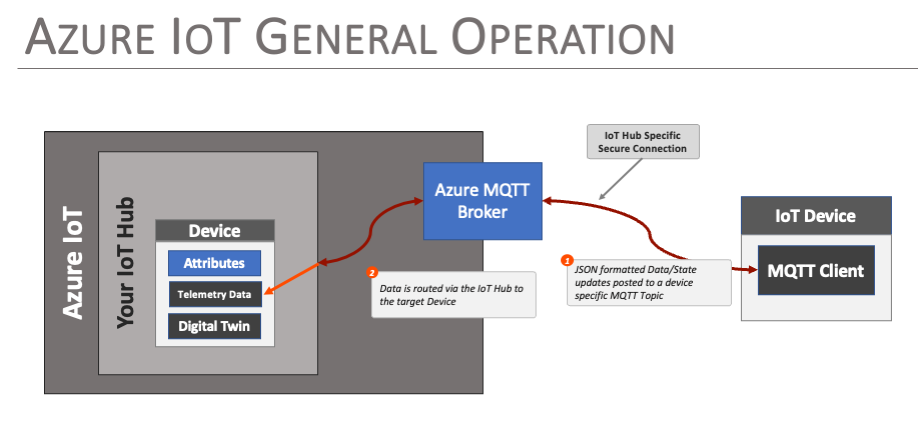
The following discussion outlines the basic steps taken to create a Device in Azure IoT that the Flux Framework can connect to.
First step is to log into your Azure account and Select Internet of Things > IoT Hub from the menu of services.
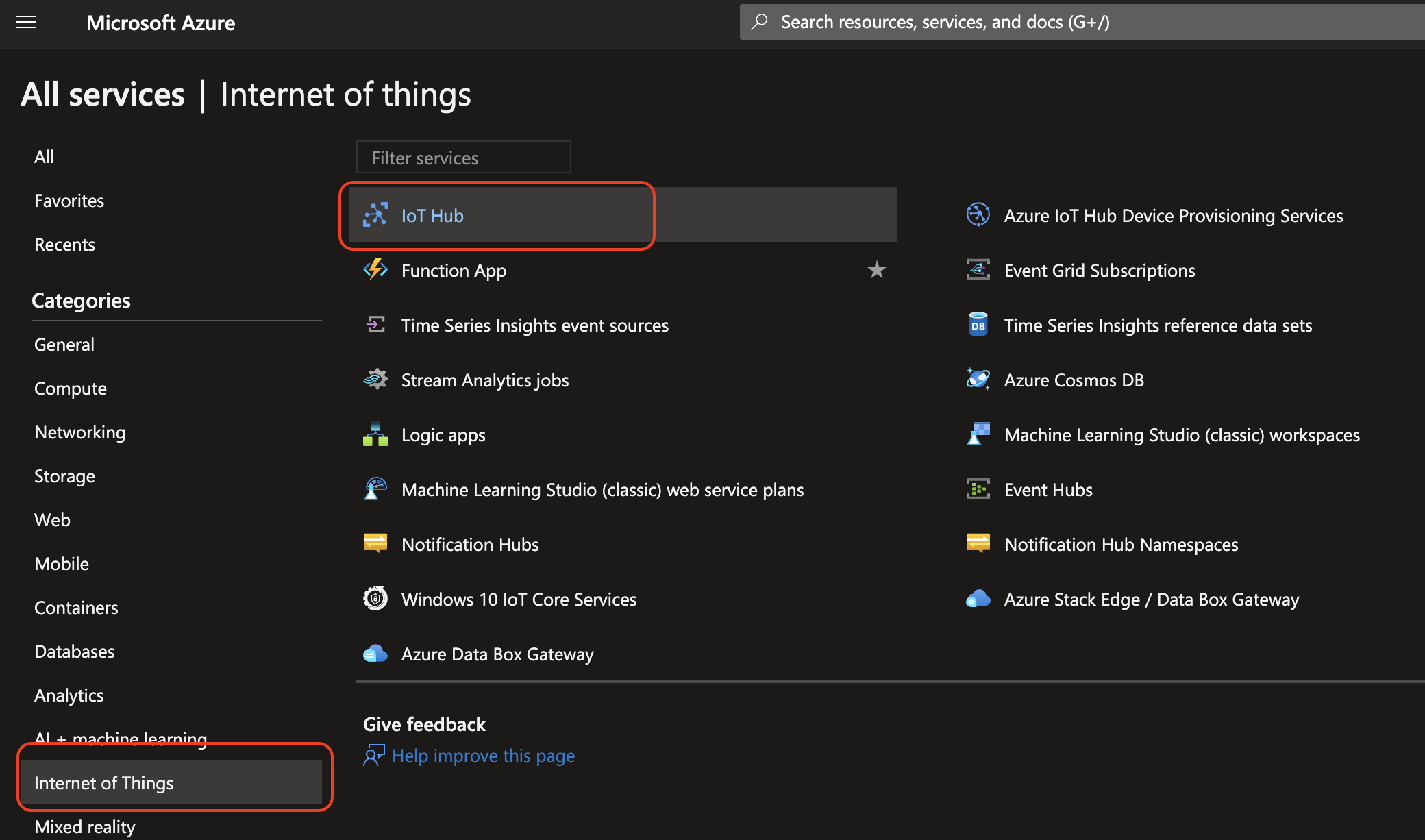
This IoT Hub page lists all the IoT hubs available for your account. To add a device, you need to create a new IoT Hub.
Follow the Hub Creation workflow - key settings used for a Flux demo device:
The remaining settings were set at their default values.
Once the IoT Hub is created, a Device needs to be created within the hub. The device represents the connection to the actual Flux-based device.
To create a device, select the Device management > Devices from the IoT Hub menu and the select the + Add Device menu item
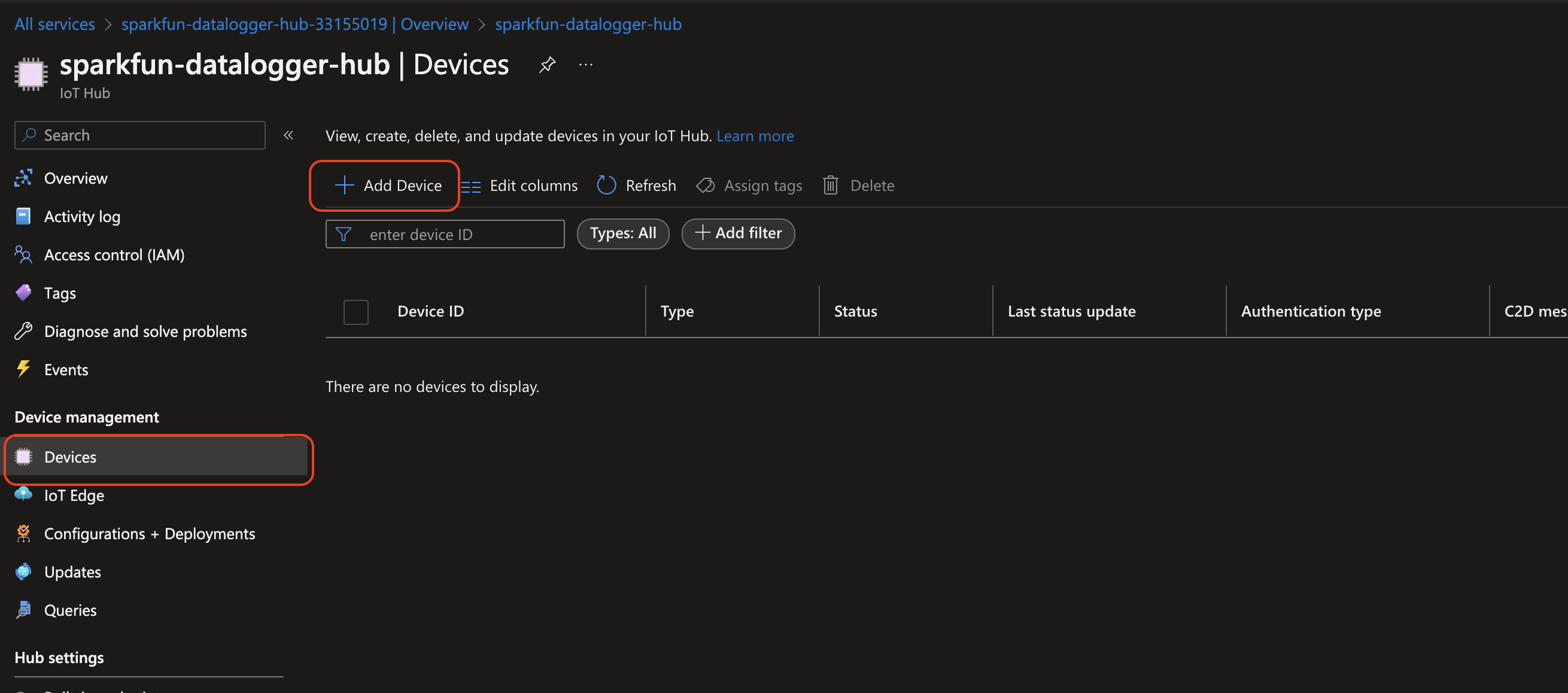
In the create device dialog:
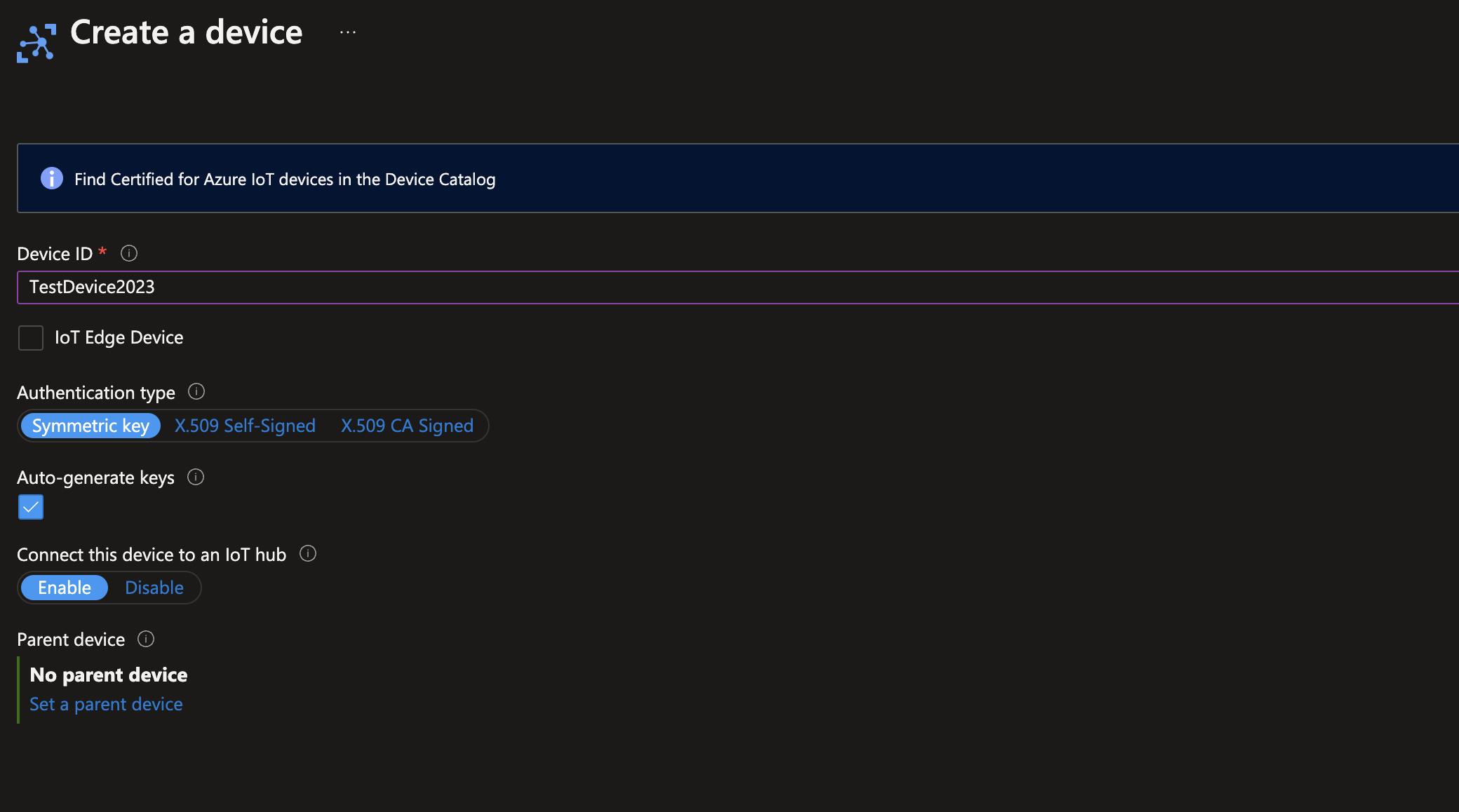
Once created, the device is listed in the Devices list of the IoT Hub. Selecting the device gives you the device ID and keys used to communicate with the device. Note, when connecting to the device in Flux, the Primary Key value is used.
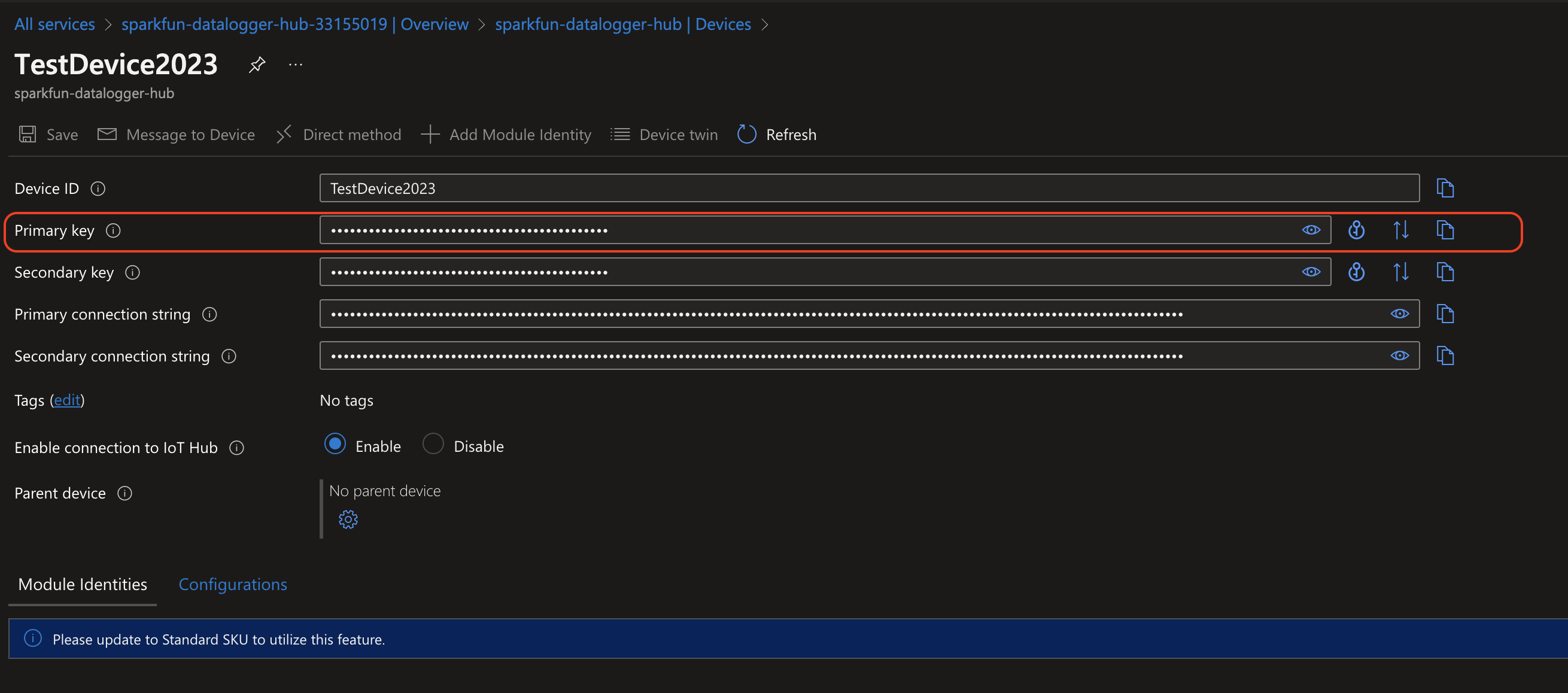
To add an Azure IoT device as a destination for the output of a Flux Framework based system, the application being created needs the following:
For this example, we show out to connect the output of a data logger in the framework to the Azure IoT device.
First - add an Azure IoT framework to your object
During the setup of the framework - at initialization, the following steps finish the basic setup of the Azure object.
Once the Flux Azure IoT object is integrated into the application, the specifics for the Azure IoT Thing must be configured. This includes the following:
This value is hostname of the created IoT Hub and is obtained from the Overview page of the IoT Hub.

The Device ID is obtained from the device detail page. This page is accessible via the Device listing page, which is accessed via the Device management > Devices menu item. Selected the device of interest (TestDevice2023 for this example) provides the device ID and Primary Key.

This is obtained via the Device details page, as outlined in the previous section. Note - you view and copy the key via the icons on the right of the key entry line.
The Certificate Authority file for Azure is downloaded from this page:
https://learn.microsoft.com/en-us/azure/security/fundamentals/azure-ca-details
The file to download is the Baltimore CyberTrust Root entry in the Root Certificate Authorities section of the page.
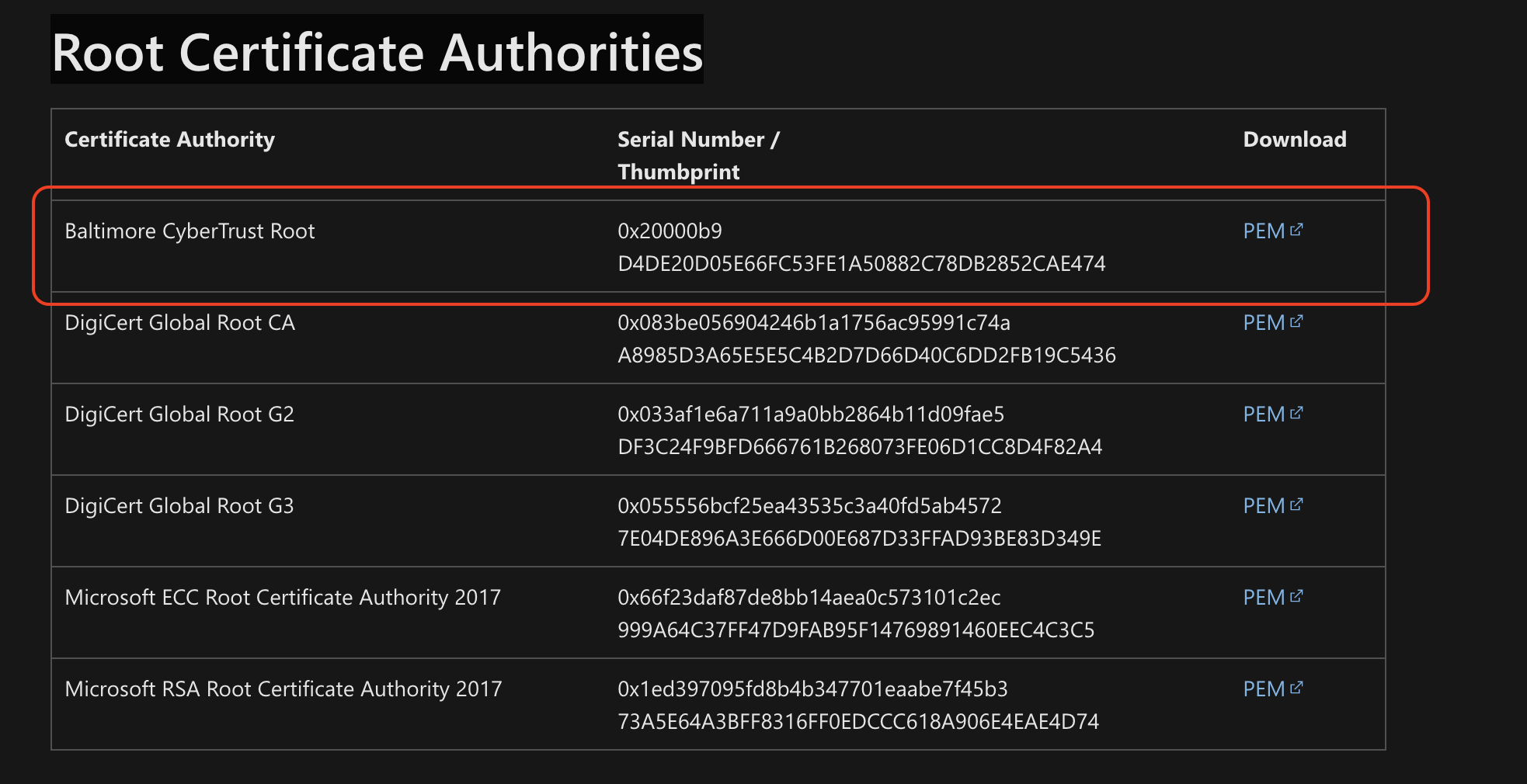
The above property values must be set on the Flux Azure IoT object before use. They can be set in code, like any framework object property, or via a JSON file that is loaded by the system at startup. For the Flux Azure IoT example outlined in this document, the entries in the settings JSON file are as follows:
Once the Flux-based device is configured and running, the Azure IoT capability in Flux posts messages via MQTT to the connected Azure Device via it's IoT Hub. Messages to the device are posted as Telemetry Data for the device.
The easiest method to view the Telemetry data being sent to an Azure Iot Device is via the Azure IoT Hub extension for the Visual Studio Code editor.
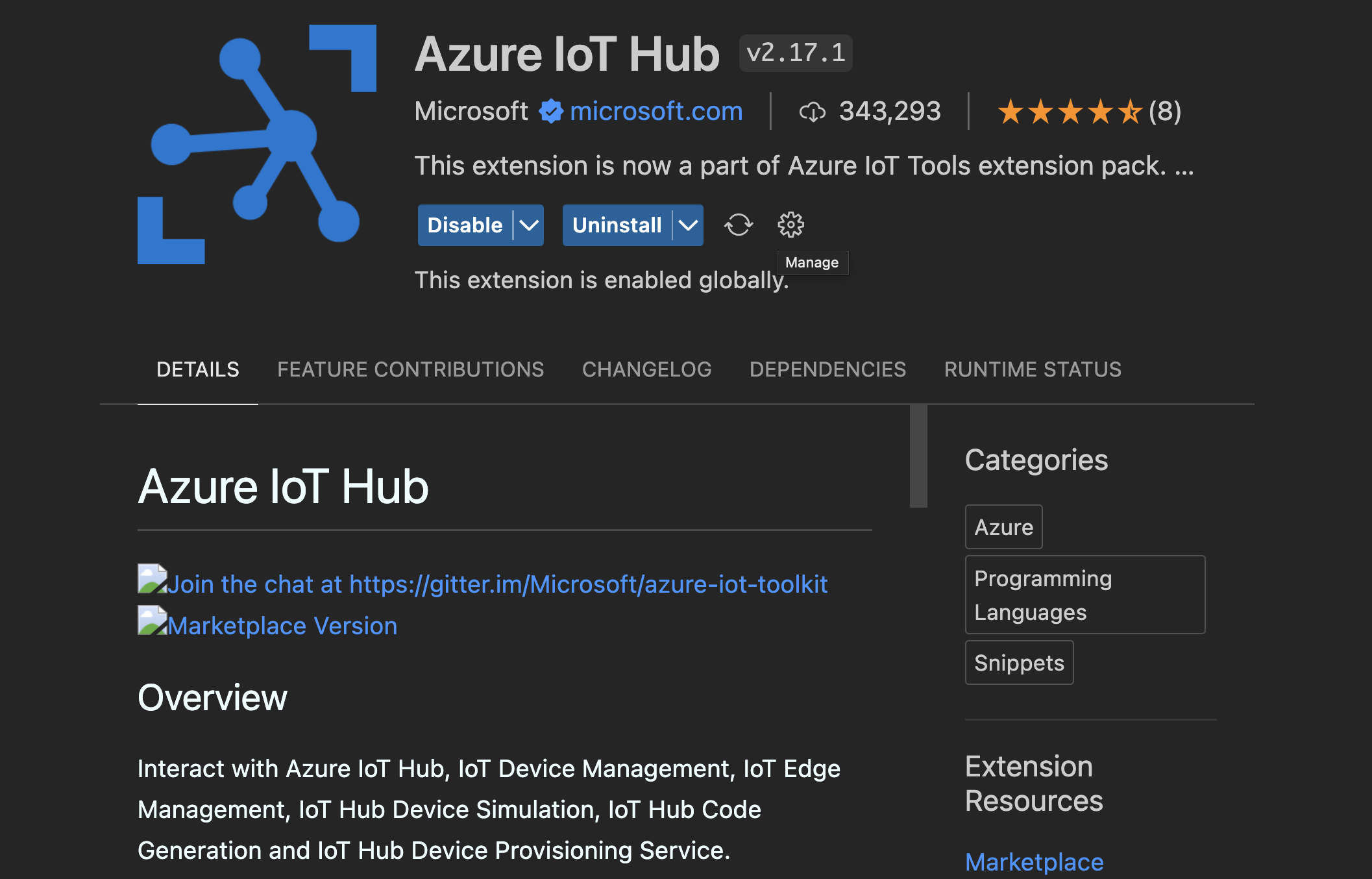
Once installed, and connected to Azure via the Azure Account extension, you can connect to the target IoT Hub, and monitor telemetry data for a IoT device.
On the Explorer pain of Visual Studio Code, click on the **...** menu of the AZURE IOT HUB section. In the popup menu, select the Select IoT Hub menu entry.
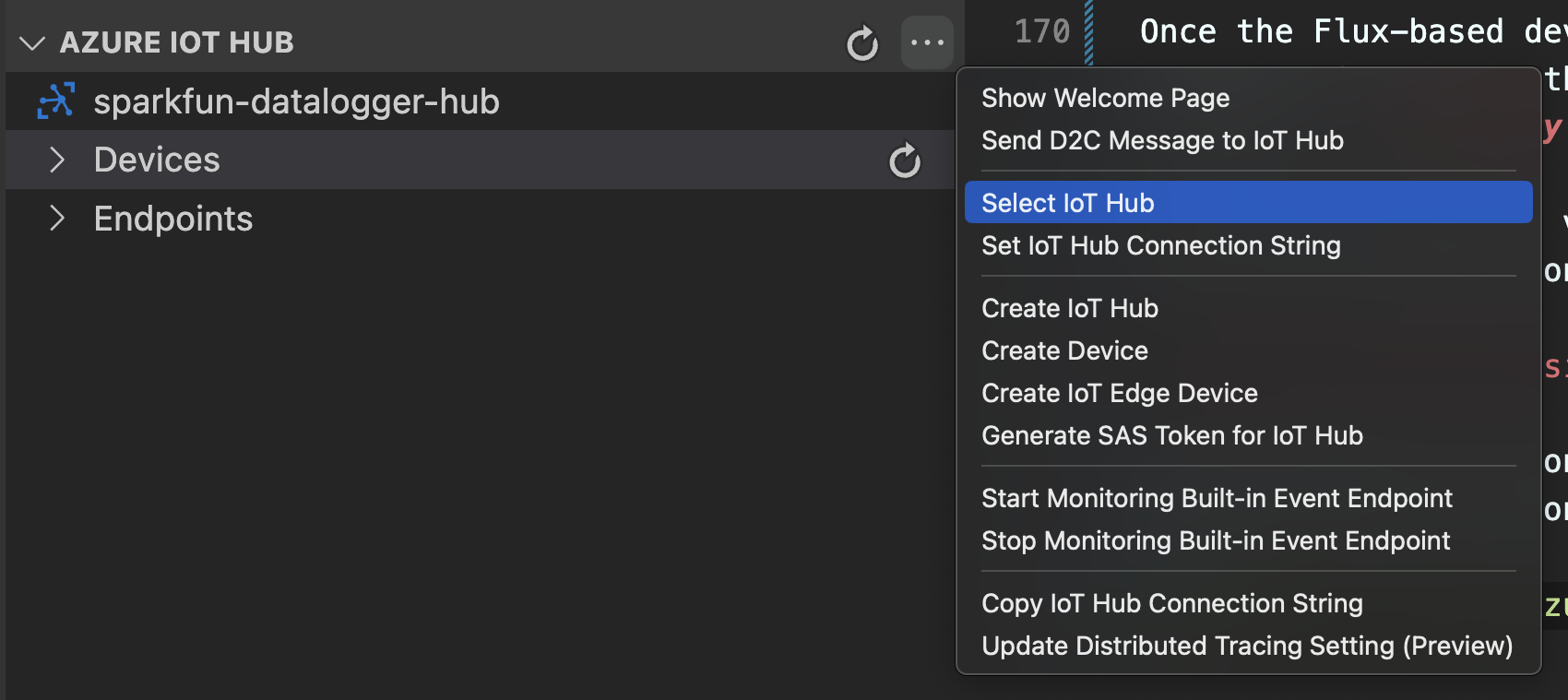
The available IoT Hubs are displayed in the editors command prompt. Select the desired hub and press enter (or click).

The hub is then displayed in the AZURE IOT HUB section of the editor Explorer. Expanding the Devices section of the Hub will list the example device created above.
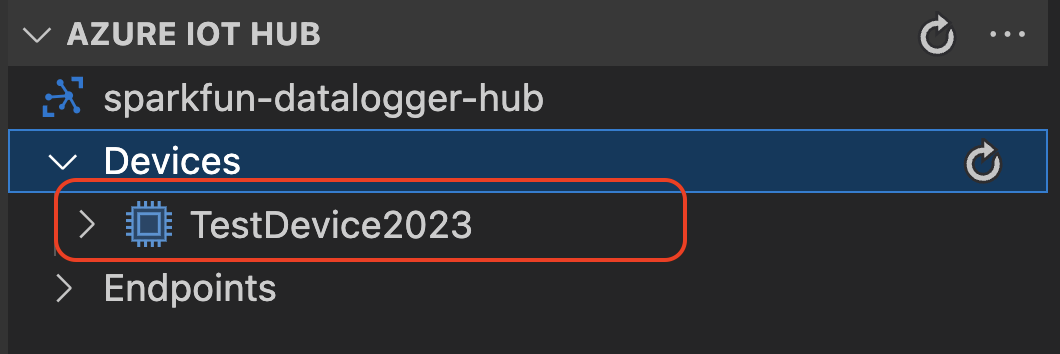
To monitor the telemetry data send to a device, right click on the device, TestDevice2023 in this example, select the menu entry Start Monitoring Build-in Event Endpoint.

Once selected, the editor output console will start displaying output for the selected device. For the above example, with a device that has environmental sensors attached, the output appears as follows:
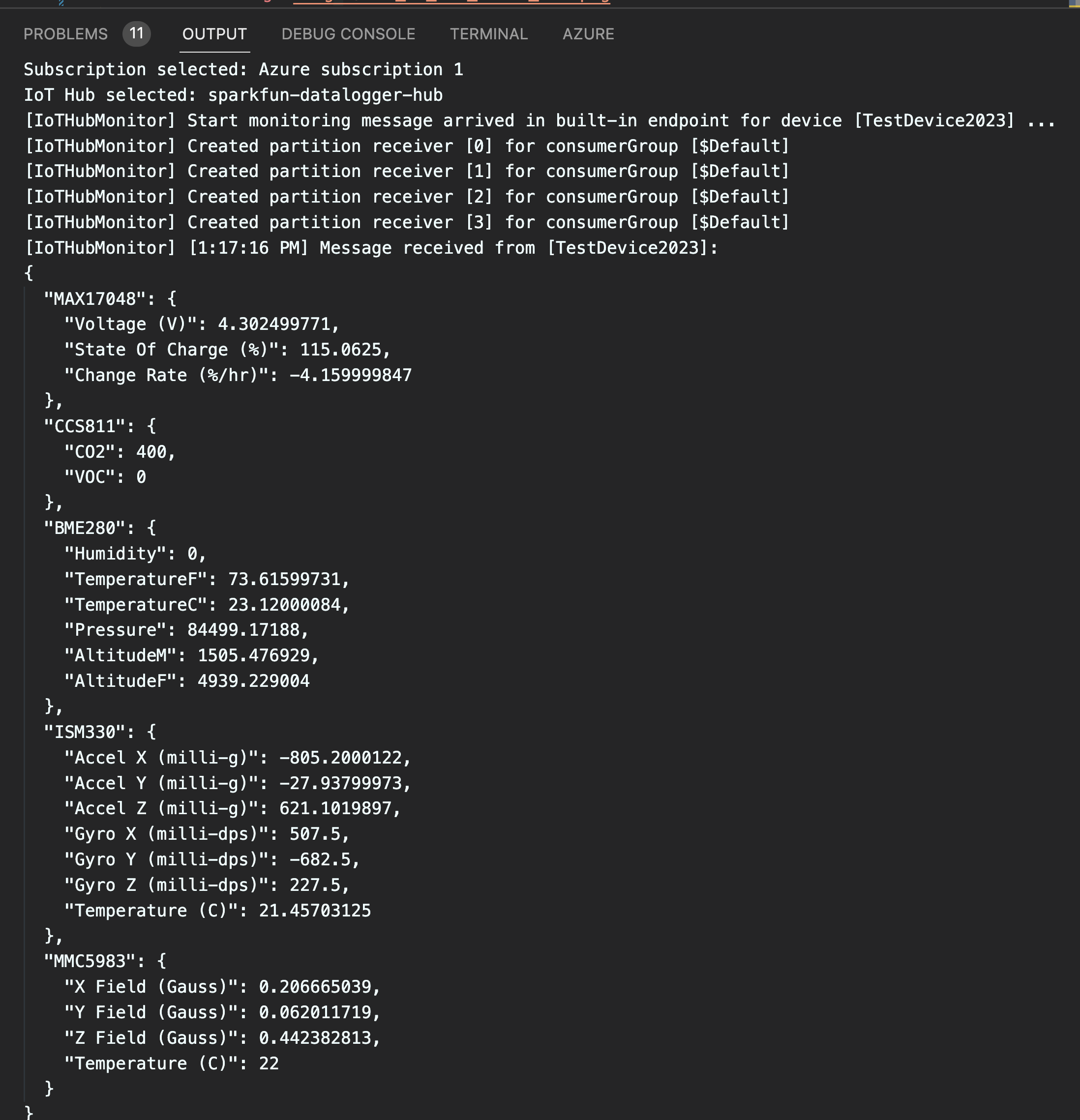
To stop monitoring, click the Stop Monitoring build-in event endpoint item that is displayed in the status bar of the editor.

A menu option to stop monitoring is also available from the **...** menu of the AZURE IOT HUB section in the editor Explorer panel.